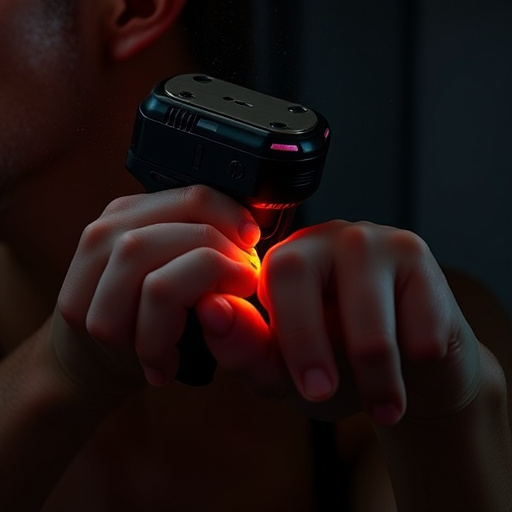A stun gun, or electronic control device (ECD), temporarily disables targets through high-voltage, low-current electric pulses, delivered via direct contact or conductive materials. While accessible and safe for self-defense, their reliability varies based on usage, target area, and quality. Traditional "touch" models require skin-to-skin contact, but "no-touch" models operate wirelessly from a distance, penetrating clothing. Both offer advantages in user safety and effectiveness, with the choice depending on individual preference. Regarding "does a stun gun have to touch skin," no-touch models eliminate this requirement.
“Uncover the power and effectiveness of stun guns through this comprehensive review. Explore what sets these personal defense devices apart, from their operation to their impact. We delve into the benefits and limitations, including the age-old question: do stun guns always work as claimed? Furthermore, understand the critical safety aspects, particularly the debate between touch and no-touch stun guns, ensuring informed decisions in potentially life-saving scenarios. Get ready to navigate this dynamic landscape.”
What is a Stun Gun and How Does it Work?
A stun gun, also known as an electronic control device (ECD), is a non-lethal weapon designed to temporarily incapacitate a person through electrical impeding muscles and causing disorientation. It works by delivering a strong electric current through two prongs or electrodes that make contact with the target’s skin. This jolt of electricity disrupts normal muscle function, resulting in temporary paralysis, allowing the user to escape from potentially harmful situations.
Unlike traditional firearms that use projectiles, stun guns utilize electrical energy. When activated, they emit a high-voltage, low-current electric pulse, which is safe for humans but effective in neutralizing an assailant. The device’s effectiveness doesn’t rely on direct contact with the skin; instead, it uses conductive materials like metal or wet clothing to complete the circuit and deliver the shock. This means that even if the prongs don’t make direct physical contact with the skin, the electrical current can still be transmitted through other surfaces.
Benefits and Limitations of Stun Guns: Does It Always Work as Advertised?
Stun guns are designed to incapacitate an assailant with an electric shock, offering a non-lethal self-defense option. One of their primary benefits is accessibility; they are easily portable and can be carried discreetly, empowering individuals to protect themselves in various situations. Moreover, stun guns often require no physical contact to activate, as the device fires an electric current through the air, ensuring users can maintain a safe distance from potential threats. This feature is particularly appealing for those who may be hesitant to make direct contact during a dangerous encounter.
However, while stun guns have proven effective in many cases, there are limitations to their reliability. Factors such as proper usage, target area, and device quality can influence the outcome. It’s not always guaranteed that a stun gun will neutralize an attacker instantly, especially if not delivered correctly or if the assailant is particularly robust. Additionally, some critics argue that relying solely on stun guns may create a false sense of security, encouraging individuals to confront dangerous situations without proper training or self-defense skills.
Safety Considerations: Touch vs. No-Touch Stun Guns
When considering a stun gun for self-defense, one of the most important factors is understanding safety considerations. A common question that arises is whether a stun gun needs to touch the skin of the assailant to be effective. The answer lies in the two primary types of stun guns available: touch and no-touch models.
Touch stun guns, as the name suggests, deliver an electric shock by making direct contact with the target’s skin. This method guarantees a connection and ensures the device functions as intended. On the other hand, no-touch stun guns operate wirelessly, emitting a powerful electrical pulse from a safe distance. While they may seem less effective due to not touching the skin, modern no-touch models use advanced technology to penetrate clothing and deliver a strong enough shock to incapacitate an attacker. Thus, understanding these differences is crucial when selecting a stun gun that aligns with your comfort level and safety preferences without compromising effectiveness.
